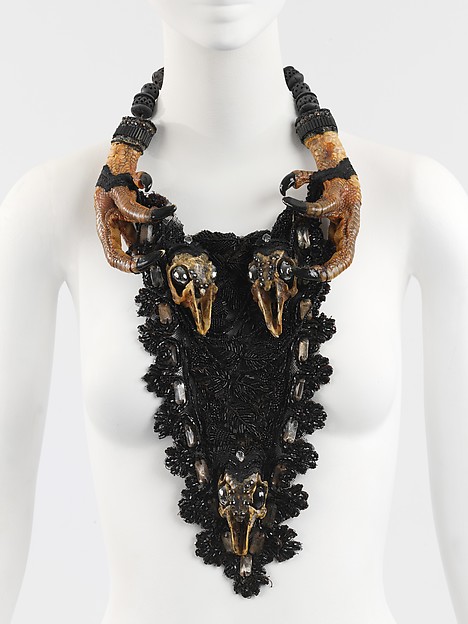The official theme of the joint 44th AIC Annual Meeting and 42nd CAC-ACCR Conference was “Emergency! Preparing for Disasters and Confronting the Unexpected in Conservation”, however, a series of talks diverged from the theme, discussing instead the role of the conservation profession in supporting social inequality and established colonial structures: Kelly McHugh’s was one such dark horse.
She began her talk with the disclaimer that her talk would contain much self-reflection. This proved a successful approach to a difficult topic, the marginalization of Native Americans within the United States of America (Canada’s crimes against First Nations groups were not addressed). By expressing her position within the framework of her own experiences, McHugh made her message approachable, sharing blame in the problems she brought to light. As McHugh noted, conversations on reconciliation can be difficult as they bring up paralyzing feelings of discomfort, anxiety, and guilt. She stressed that in addressing injustices, it may feel to Americans that the legitimacy of the origin myth of the USA as the Land of the Free is undermined – an idea expressed by Walter Echo-Hawk in his book, “In the Light of Justice”.

McHugh began by discussing Tellico Lake, TN where she and her family vacation. Until recently she was unaware that the lake, created as a result of the construction of the Tellico dam, covered two sacred Cherokee sites, Chota and Tanasi. The construction of the dam, which was delayed for years due to an endangered fish called the snail darter, was not hindered at all by the sacred status of the sites, which were later commemorated through the naming of golf courses and the creation of a lakeside memorial. Tying her talk into the overarching conference theme, McHugh pointed to the irony of those responsible memorializing destroyed sites lost through an intentional, man-made disaster. McHugh went on to emphasize the significance of her own ignorance of Chota and Tanasi as symptomatic of the societal blindness to aboriginal issues, which was particularly uncomfortable for her after 19 years of employment at the National Museum of the American Indian.

She then directed the audience’s attention to other sacred Native sites harmed in the interest of industry and tourism. She addressed the inadequacies of the American Indian Religious Freedom Act of 1978 and the National Historic Preservation Act of 1966, even noting that the Native American Graves Protection and Repatriation Act of 1990 fails to give First Nations tribes the right to completely barre all disturbance of sacred sites. She highlighted one location successfully protected from development for an army training facility, Medicine Bluff, which was done so by culturally educating the judge in the case, by inviting him to the site and having him walk with a religious leader. She also cited current threats to Native American heritage, notably encroaching sea levels from climate, requiring the displacement of tribal villages.

Stressing the inherent connection between human rights and authority over cultural patrimony, McHugh showed the importance of generating awareness of these issues all the while not separating Native history from our own. McHugh called for true collaboration between museums and native communities, noting that NMAI was getting closer to such a relationship and highlighting other significant organizations like the School for Advanced Research and the Association of Tribal Archives, Libraries, and Museums. She suggested the use of listening sessions and the creation of collaborative collections care initiatives to allow for sharing in the responsibilities of problem-solving on equal ground.
Overall, the message McHugh delivered was an important one – that as conservators we need to do more to recognize and respect the essential connection between cultural heritage and community, that we cannot ignore the human element in favour of remaining a neutral observer to the struggle for recognition of human rights for First Nations peoples. There is no neutral position, inaction and ignorance only support the inequality founded on colonialism and racism. McHugh gave an important call to action: true collaboration or bust!
Author: Gyllian Porteous
Joint 44th AIC Annual Meeting and 42nd CAC-ACCR Conference – Textile Session, May 16, "Vial Things: Preserving the Unexpected in the Occult Jewelry of Simon Costin", by Sarah Scaturro
To say Sarah Scaturro had me at “semen” is both entirely accurate and the oddest phrase I have ever put to virtual paper. To be precise, she had my interest at “Vials of evaporating semen…”, the jaw-dropping opener to her abstract, and she held it for her entire talk on the conservation of jewelry by Simon Costin contained within the Metropolitan Museum of Art’s Costume Institute collection.
The two necklaces of discussion were Memento Mori, made by Costin in 1986, and Incubus, made in 1987. Both presented unique preservation problems not frequently encountered by textile conservators. Faced with unfamiliar challenges, Scaturro sought first to better understand the mechanisms of degradation affecting the necklaces: this involved conducting artist interviews and consulting alternatives resources on taxidermy and liquid-preserved specimens.

In the case of Memento Mori, the turkey feet and rabbit skulls, incorporated into the necklace’s design, had begun to degrade due to insufficient preparation methods. The fats contained within the skin of the turkey feet had oxidized leading to a rancid odor – a smell all too familiar to me having recently completed the degreasing of beluga whale jawbones. The oxidized fats were also pooling at the surface of the feet, risking degradation of the neighboring necklace elements. The rabbit skulls, which retained some bits of flesh and hair, suffered from discoloration and mold, negatively impacting the artist’s intended aesthetics. Swabbing with ethanol proved to be the solution for both of Memento Mori’s problems – ethanol was used to degrease the surface of the turkey feet while it also acted as a biocide, killing the mold on the rabbit skulls, in addition to reducing the discoloration. Scaturro also employed preventive strategies which included the use of barriers to prevent transfer of the turkey fats to other parts of the necklace and anoxia to slow the oxidation of the fats.
The treatment of Incubus, the inspiration for the talk’s title and my grim interest, was still in progress at the time of Scaturro’s talk. The necklace, which resulted in a charge of indecency for the artist at the time of its unveiling, contains 5 vials of semen, one donation having been made by the artist himself. Over the past 30 years, the semen has discolored and partially evaporated – how best to address this issue, Scaturro was undecided. She raised two amusing points while discussing her research into the degradation mechanisms of Incubus: one, there is little information available on how semen degrades over thirty years; and two, it would be interesting to understand what elements of the five donations were responsible for the variations in color and evaporation rate.

Her first steps to the treatment of Incubus involved the creation of permanent upright storage for the necklace, thereby avoiding contact between the rubber stoppers on the vials and their contents. Scaturro made note that storage and display at a consistent temperature (as opposed to cold storage and room temperature display) was best practice for slowing the evaporation of the semen. She was also considering applying cyclododecane to improve the seal of the vials – the benefit of cyclododecane wax being its gradual sublimation at room temperature, making it possible to display the necklace without wax coatings affecting the aesthetics.
Scaturro concluded by noting that further interviews with Simon Costin were planned with the hopes that he might be able to offer direction as to the refilling or not of the vials of semen.
Overall, Scaturro handled the unusual topic with professionalism, inciting only minimal nervous giggling. The talk provided a window into the extremes of art and art conservation, and offered an example of how to approach the even the most macabre of objects.
